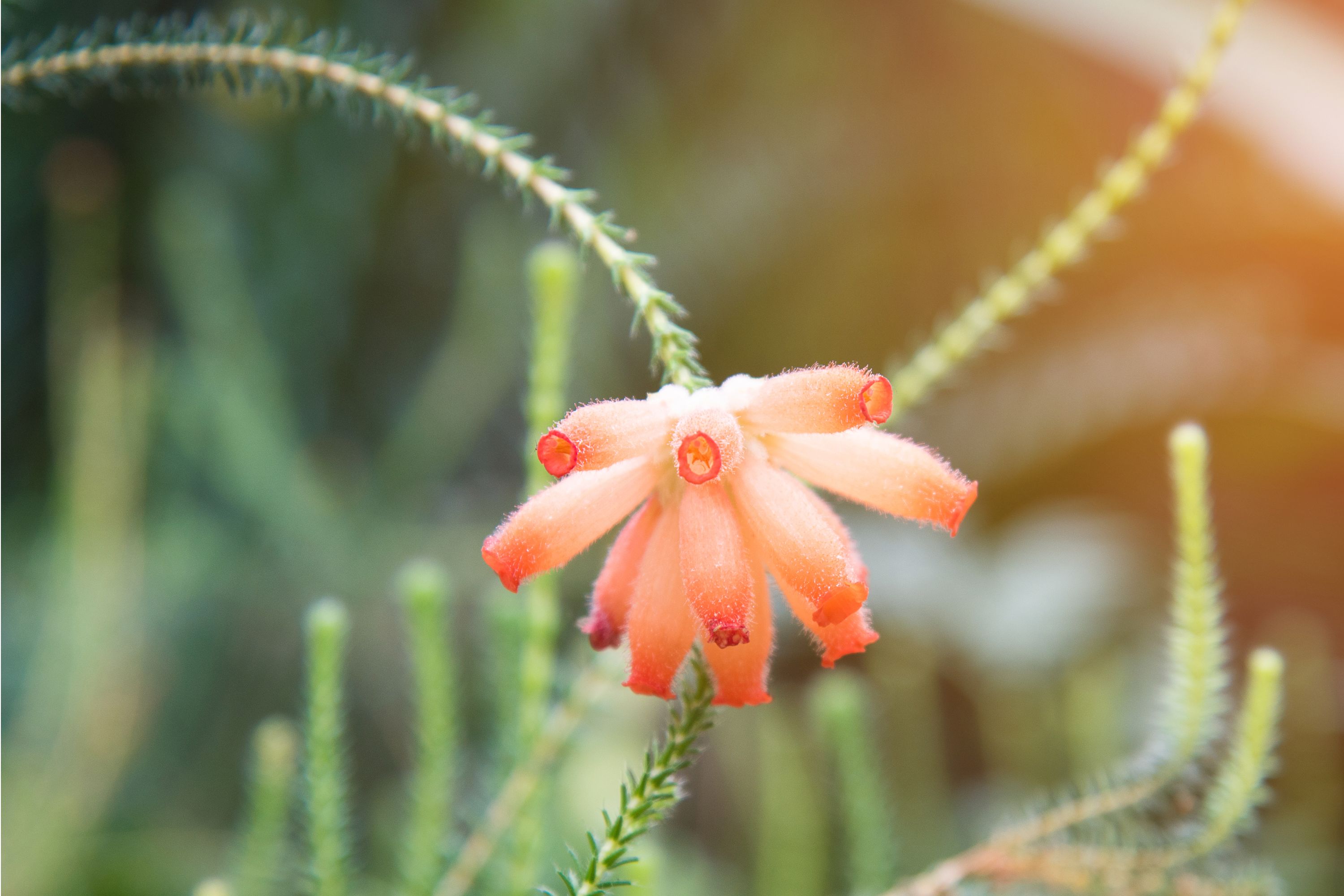Erica versicolor
(Erica versicolor)

Description
Erica versicolor is a species of flowering plant in the family Ericaceae, native to South Africa’s Cape Province. In cultivation E. versicolor requires well-drained acidic soil and a sheltered situation in full sun. It cannot tolerate freezing temperatures. In the UK it has gained the Royal Horticultural Society’s Award of Garden Merit. Erica versicolor is an evergreen shrub growing to 3 m (9.8 ft) tall by 1 m (3.3 ft) broad, bearing tiny needle-like leaves and long tubular flowers up to 3 cm (1.2 in) in length. The flowers have a two-tone appearance, predominantly red with green or yellow tips (hence the Latin specific epithet versicolor), and bloom from October until April. The leaves are trifoliate, smooth, and a deep green. The branches of the plant are nearly simple. Erica is a genus of roughly 857 species of flowering plants in the family Ericaceae. The English common names heath and heather are shared by some closely related genera of similar appearance. The genus Calluna was formerly included in Erica – it differs in having even smaller scale-leaves (less than 2–3 mm long), and the flower corolla consisting of separate petals. Erica is sometimes referred to as "winter (or spring) heather" to distinguish it from Calluna "summer (or autumn) heather". Most of the species of Erica are small shrubs from 20–150 cm (8–59 in) high, though some are taller; the tallest are E. arborea (tree heath) and E. scoparia (besom heath), both of which can reach up to 7 m (23 ft) tall. All are evergreen, with minute, needle-like leaves 2–15 millimetres (0.079–0.591 in) long. Flowers are sometimes axillary, and sometimes borne in terminal umbels or spikes, and are usually outward or downward facing. The seeds are very small, and in some species may survive in the soil for decades. A number of increasingly detailed phylogenetic hypotheses for Erica have been published based on nuclear ribosomal and plastid DNA sequences. The closest relatives of Erica are Daboecia (one or two species) and Calluna (monospecific), representing the oldest surviving lineages of a, by inference, ancestrally Palearctic tribe Ericeae. The small number of European Erica species represent the oldest lineages of the genus, within which a single, order-of-magnitude more species-rich, African clade is nested. Within the African clade, Cape and Madagascan/Mascarene species respectively represent monophyletic groups.
Taxonomic tree:







